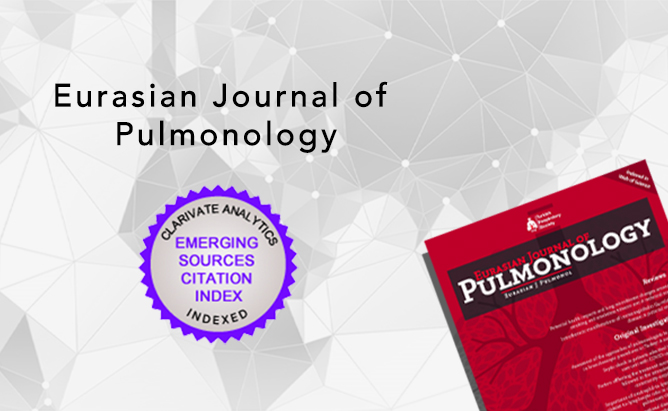2Department of Pulmonary Diseases, University of Health Sciences, Dr. Suat Seren Chest Diseases and Surgery Training and Research Hospital, Izmir, Türkiye
3Department of Pulmonary Diseases, University of Health Sciences, Izmir Faculty of Medicine, Izmir, Türkiye
Abstract
BACKGROUND AND AIM: The prevalence of sleep-related breathing disorders (SRBD) is higher in patients with idiopathic pulmonary fibrosis (IPF) compared to the healthy population. On the other hand, comprehensive and comparative assessment of the diagnostic characteristics in IPF patients with and without SRBD is highly needed. The purpose of this study is to analyze the prevalence and types of SRBD in IPF patients, and to investigate and compare the laboratory characteristics of IPF patients with and without SRBD.
METHODS: In this prospective study, demographic, respiratory function, and diffusion test data, polysomnography data, 6-minute walk test score, and the scores of quality of life questionnaires of 55 patients were recorded. Additionally, patients were divided into two groups as patients with and without SRBD, and all obtained data were compared between these groups.
RESULTS: The mean age was 67.5±7.9 years. Forty patients (72.7%) were male and 15 (27.3%) were female. The prevalence of SRBD in IPF patients was 78.2%. The mean values of apnea-hypopnea index (AHI) 19.2±19.3 vs 6.7±10.5, supine AHI 27.5±26.9 vs 5.3±12.9, non-rapid eye movement (non-REM) AHI 18.9±20.5 vs 6.1±10.3, and oxygen desaturation index 17.4±22.6 vs 3.4±3.7 were found to be significantly higher in IPF patients with SRBD compared to IPF patients without SRBD. Mean Stop-Bang scores differed significantly between the two groups, with patients having SRBD scoring 4.2±1.4 compared to 3.2±1.1 for those without SRBD (p=0.032). Additionally, there were significant differences in the symptom spectrum between the groups (p=0.04).
CONCLUSIONS: SRBDs are common in patients with IPF. We concluded that questioning symptoms and performing a Stop-Bang questionnaire in these patients is effective in the decision for performing polysomnography for IPF patients.




 Görkem Vayısoğlu Şahin1
Görkem Vayısoğlu Şahin1 




